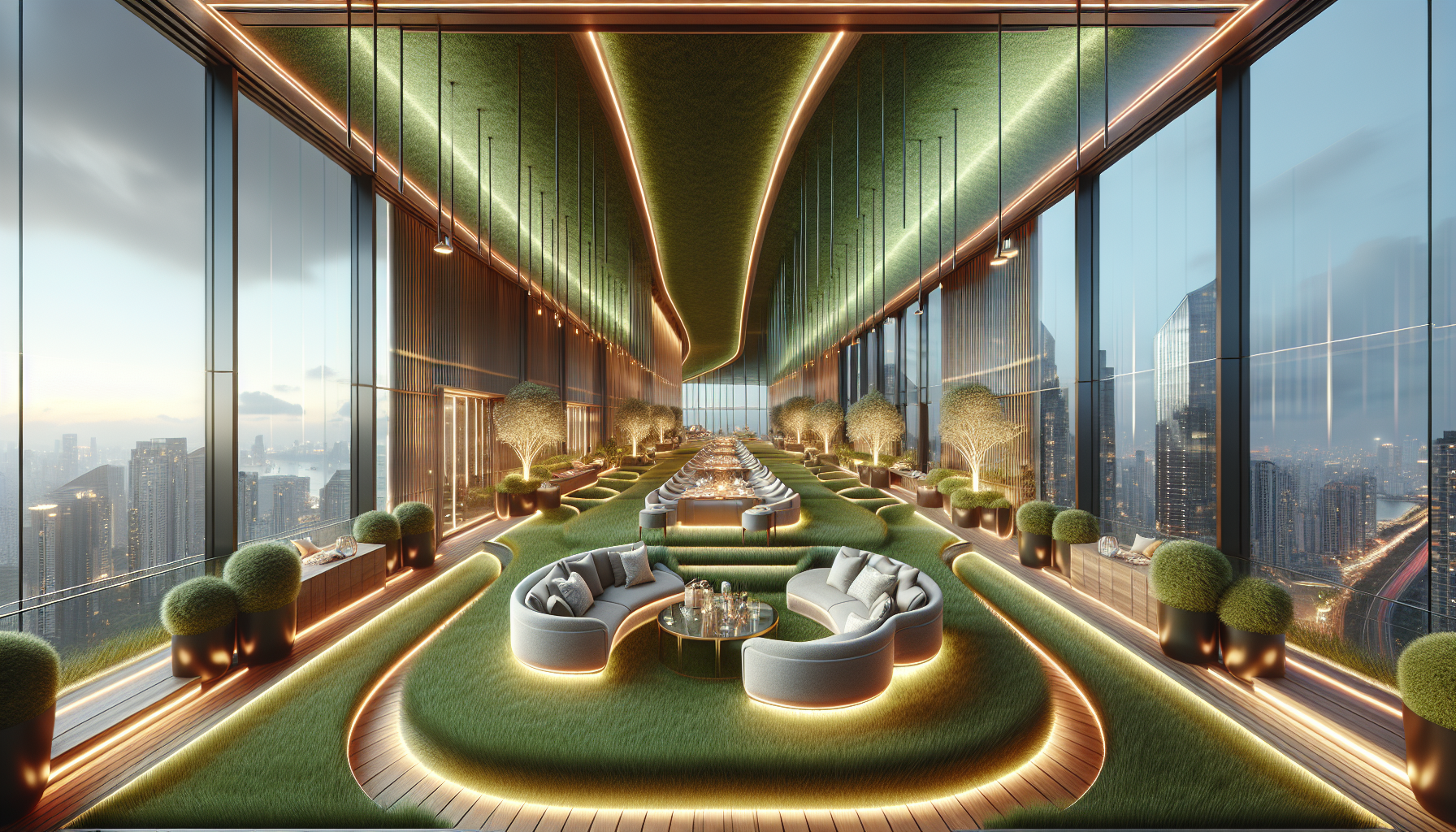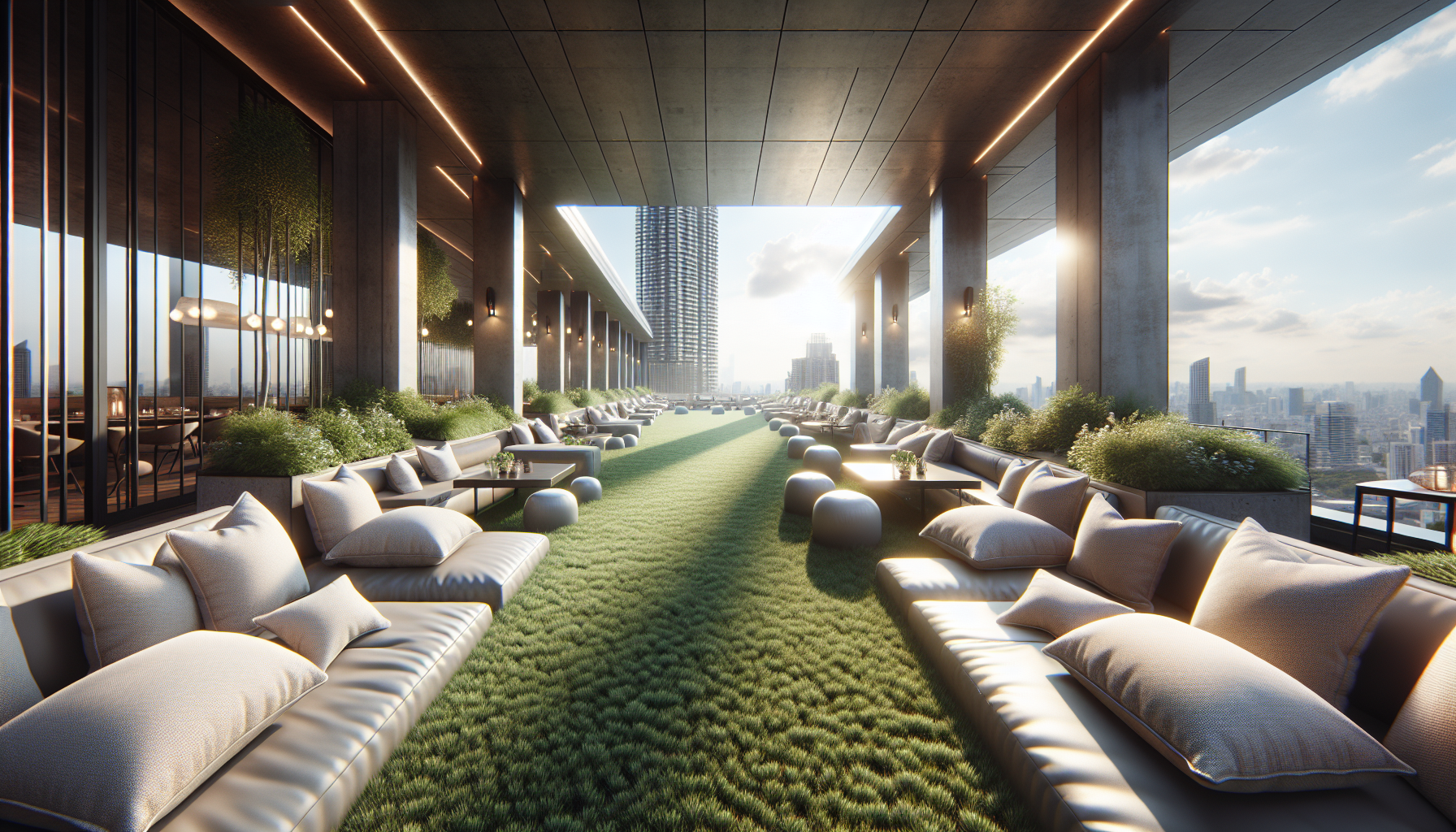
Synthetic lawns, also known as artificial grass, have become increasingly popular in recent years due to their numerous benefits and potential as a worthwhile investment for homeowners. One of the key factors to consider when contemplating synthetic lawn installation is the environmental impact.
Synthetic lawns require little to no water, unlike natural grass that necessitates regular watering.
This results in significant water savings, making them particularly advantageous in areas with limited water resources.
In addition, synthetic lawns eliminate the need for chemical usage, including pesticides and fertilizers, which can be harmful to the environment.
Apart from their positive environmental impact, synthetic lawns offer various other advantages. They are highly beneficial for the environment and require low maintenance, making synthetic lawn installation and artificial grass benefits worth considering.
Benefits of Synthetic Lawn Installation
Synthetic lawn installation offers numerous benefits that make it a popular choice for homeowners. One of the major advantages is the low maintenance required.
Unlike natural grass, synthetic lawns do not need watering, mowing, or fertilizing, resulting in significant time and cost savings.
Synthetic lawns are environmentally friendly as they reduce water consumption and eliminate the need for harmful pesticides and fertilizers.
They also have a positive impact on local ecosystems.
Synthetic lawns are highly durable and can withstand heavy foot traffic, extreme weather conditions, and pests.
This durability is one of the pros of synthetic turf. It ensures that the investment in synthetic lawn installation is long-lasting and cost-effective.
The synthetic turf cost may be higher upfront but provides long-term savings compared to natural grass. It depends on the pros and cons of synthetic turf, as well as the cost.

Comparison of Synthetic Turf and Natural Grass Durability
When comparing the durability of synthetic turf and natural grass, there are several factors to consider. Natural grass, known for its resilience, can be affected by weather conditions, maintenance practices, and usage.
High-traffic areas pose challenges for maintaining natural grass due to issues such as erosion and wear and tear.
Despite its natural resilience, artificial turf durability surpasses that of natural grass.
On the other hand, synthetic turf is constructed using durable materials that can withstand various weather conditions and heavy usage. It offers exceptional resistance to wear and tear, making it a popular choice for sports fields and high-traffic areas.
The durability of artificial turf stems from its robust construction, specifically designed to withstand heavy usage and resist damage. Not only does synthetic turf withstand wear and tear, but it also offers superior artificial turf durability and requires minimal synthetic grass maintenance.
| Natural Grass | Artificial Turf |
|---|---|
| Affected by weather conditions, maintenance practices, and usage | Constructed using durable materials |
| Pose challenges in high-traffic areas due to erosion and wear and tear | Offers exceptional resistance to wear and tear |
| Less durable compared to artificial turf | Specifically designed to withstand heavy usage and resist damage |
Synthetic Grass Maintenance Is It Intensive
Synthetic grass maintenance is crucial for those who own an artificial lawn. Many homeowners are drawn to synthetic grass for its low-maintenance nature, but it’s important to understand the level of effort required to keep it in good condition.
While synthetic lawns do offer numerous benefits, such as the extended artificial lawn lifespan and the consistent synthetic grass aesthetics, they still require some level of maintenance.
Factors affecting the intensity of synthetic grass maintenance include climate, usage, and installation quality.
In areas with heavy rainfall or high temperatures, more maintenance may be required to prevent mold or fading. If the synthetic grass is subjected to frequent use, such as in a backyard with children or pets, more cleaning and upkeep will be necessary to maintain its appearance. To effectively maintain synthetic grass, homeowners should consider both the artificial lawn lifespan and synthetic grass aesthetics.
Average Lifespan of an Artificial Lawn
The average lifespan of an artificial lawn depends on several factors. These factors include the quality of materials used, proper installation techniques, maintenance practices, and protection against wear and tear.
Choosing high-quality materials, hiring professional installers, implementing proper maintenance routines, and taking precautions to prevent damage can all help prolong the lifespan of an artificial lawn.
On the other hand, poor quality materials, improper installation, inadequate maintenance, heavy use, and foot traffic, and extreme weather conditions can shorten its lifespan.
It is important to understand when it is time to replace an artificial lawn, considering signs of wear and tear and weighing the cost-benefit of replacement.
Overall, knowing the average lifespan is crucial before investing in an artificial lawn. Artificial turf is known for its positive environmental impact, particularly when it comes to water savings compared to traditional synthetic turf.
Enhancing Outdoor Spaces with Synthetic Turf Aesthetics
The growing trend of using synthetic turf for outdoor spaces has gained significant momentum in recent years. The artificial grass appearance of synthetic turf offers an attractive and low-maintenance alternative to natural grass.
With a wide range of shades and textures available, synthetic turf can effortlessly create a lush and vibrant landscape that remains visually appealing throughout the year.
One of the major advantages of synthetic turf is its ability to enhance the overall aesthetic appeal of any property.
It effortlessly creates a well-maintained and manicured look that lasts all year round. Achieving a seamless and natural appearance heavily relies on the installation process.
When it comes to creating a cohesive and inviting outdoor space, synthetic turf proves to be an excellent choice. Its versatility allows for endless design possibilities, enabling homeowners to cultivate a unique and personalized environment. Whether it’s a backyard or a front lawn, many homeowners are opting for artificial grass due to its natural appearance and hassle-free installation process.
Click here for more information
Environmental Impact of Artificial Turf Usage
Artificial turf has gained significant popularity in recent years due to its numerous advantages, including reduced maintenance and improved longevity. It is crucial to assess its environmental impact in order to fully understand its implications on the ecosystem.
Examining the resource consumption and manufacturing process of synthetic turf, including the materials used and the energy and water consumption involved, is essential.
One of the key advantages of artificial turf is its reduced water requirements, which can help conserve water resources.
Potential concerns related to water runoff and drainage need to be addressed. It is important to understand how artificial turf affects the natural water cycle and whether it contributes to water pollution or contamination through runoff.
The use of chemicals in maintaining synthetic lawns and the potential risks of chemical runoff must be discussed. Proper management practices and the use of eco-friendly maintenance contribute to the longevity of the infrastructure.
Artificial Turf
- Artificial turf reduces water consumption by up to 70% compared to natural grass.
- The manufacturing process of synthetic turf requires significant amounts of energy and water.
- Chemicals are often used in maintaining synthetic lawns, which can pose potential risks of chemical runoff.
- Eco-friendly maintenance practices contribute to the longevity of artificial turf infrastructure.
Water Savings with Synthetic Turf
Water conservation is paramount in landscaping, and choosing synthetic turf offers a sustainable solution. Synthetic turf is a cost-effective and sustainable option that allows for significant water savings.
By opting for synthetic turf, you can maintain a year-round green appearance without the need for watering, reducing your water usage considerably.
One of the key benefits of synthetic turf is its cost-effectiveness.
By eliminating the need for irrigation systems and reducing water utilization, synthetic turf can result in significant cost savings over time. Its sustainability also contributes to long-term cost-effectiveness, as it helps reduce operational costs and decrease waste.
CostEffectiveness of Synthetic Lawns
One of the primary advantages of synthetic lawns is their cost-effectiveness in terms of water usage. Unlike natural grass, these synthetic alternatives do not require watering, resulting in significant savings in water usage.
The lifespan of synthetic lawns is considerably longer compared to natural grass, making them a durable and cost-effective choice.
Their eco-friendly nature can lead to additional cost savings, particularly in terms of reduced water consumption.
It is important to consider potential drawbacks such as heat retention and the artificial appearance, as these factors may affect the overall experience and financial trade-offs associated with synthetic lawns
| Synthetic Lawns | Natural Grass |
|---|---|
| Water Usage | Requires watering |
| Lifespan | Considerably longer |
| Eco-friendly | Reduced water consumption |
| Drawbacks | Heat retention, artificial appearance |
Choosing the Best Artificial Grass What Type is Right for You
Which Artificial Grass Looks Most Real
